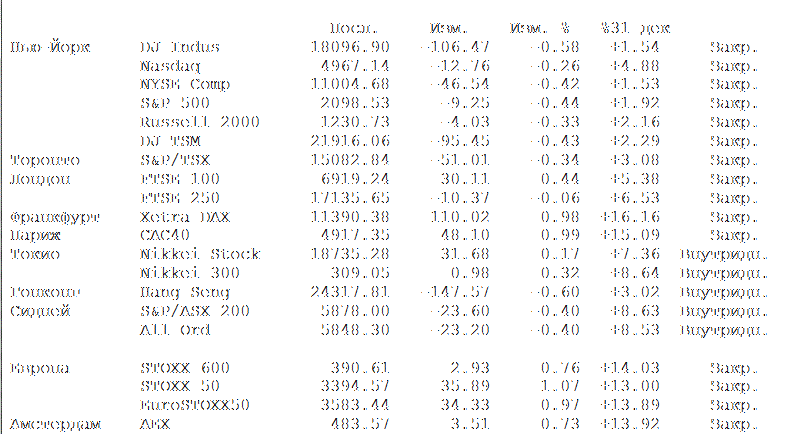Did the Nasdaq s Rally to 5K Not Help Your Funds Mutual Fund Commentary
Post on: 1 Июль, 2015 No Comment

Last week, the NASDAQ Composite index had hit the 5K level, a 15-year high or a milestone it achieved that echoed the 2000’s dot-com boom. However, some mutual fund investors might be confused if their Nasdaq-linked mutual funds had not performed equally well. The reason for this is that many mutual funds track the Nasdaq 100 Index.
Though the two indexes generally track each other, this time Nasdaq 100 has missed out on the surge in some small companies that are listed on the Nasdaq Composite Index. Meanwhile, along with the record run of the Nasdaq Composite, the NASDAQ Biotechnology index hit an all-time high last week.
Mutual funds investors however need not worry about missing a rally. Nasdaq 100 has been able to beat the Nasdaq Composite Index a lot of times. Also, often it is about a sector’s performance rather than blindly following an index-based fund. The surge in NASDAQ Biotechnology index is a proof on that note. In fact, its strong 12.5% year-to-date gain outperforms the other indexes in discussion. So, it is also crucial to identify strong sectors.
Before we focus on certain Nasdaq linked funds, let’s look into Nasdaq’s run to 5000.
Nasdaq’s 5K Run Powered by Apple
The Nasdaq has gained 7.1% in February after losing 2.1% in January, which was a difficult month for stocks. The year-to-date gain for Nasdaq Composite Index (IXIC) is 2.6%. The index was aided by a spectacular series of gains over 10 consecutive sessions which ended on Feb 24. This was its longest stretch in the green since Jul 2009. This record run began the day Apple became the first company to touch a market value of $700 billion. The company reached a market capitalization level of $710.7 billion following its debut Swiss-franc bond issues.
Again, Apple may not be a heavy weight in a mutual fund tracking the Nasdaq 100 index.
Composition
Back in 2000, a completely different set of stocks dominated the Nasdaq. Microsoft, Cisco Systems, Intel and Qualcomm are the only ones from 2000 to have retained their position among the top 20 (by market capitalization). While several of them are mere reflection of what they used to be, about eight companies are either bankrupt or have been acquired.
In these 15 years, a new generation of publicly-traded companies have emerged. For example, Apple has emerged into a bellwether in these 15 years, and is now dominating the Nasdaq. Separately, Google’s initial public offering was on Aug. 18, 2004 at a price of just $85 per share compared to Google Inc.’s (GOOGL) current price of $572.90.
No Dot-Com Bubble This Time?
The 5000 mark was accompanied by memories of how the technology bubble burst after the peak of 2000. By Oct 9, 2002, the Nasdaq had sunk to a low of 1114.11, a 78% decline over one and a half years. Subsequently, on Mar 9, 2009 the index slumped to 1268.64, its lowest point during the financial crisis.

But the Nasdaq is a much safer bet now due to a variety of factors, not just its radically different composition. The average price-to-earnings ratio of the Nasdaq is around 24 level, while in 2000 this metric had touched an all-time high of 194. While the economy was booming then, it is steadily recovering now with a peak some way away.
Meanwhile, strong earnings and better cash flow of companies also add weight to market fundamentals, providing a basis for recent index gains.
In fact, if one takes into account inflation, a 2000-level peak is quite some way off. On an inflation-adjusted basis the Nasdaq would have to touch nearly 7,000 to match the highs it achieved 15 years ago. This is why the index may be in for further gains this year. 
Funds in Focus
Among the Nasdaq Composite Index funds carrying a Zacks Mutual Fund Rank, only Fidelity Nasdaq Composite Index (FNCMX) corresponds to the price and yield performance of the Nasdaq Composite Index. This fund holds a Zacks Mutual Fund Rank #3 (Hold) and has a decent year-to-date return of 5.4%.
The other funds generally track the Nasdaq 100 index. However, as mentioned earlier, Nasdaq 100 has beaten the composite index often and is in a close race this year.
              Performance














